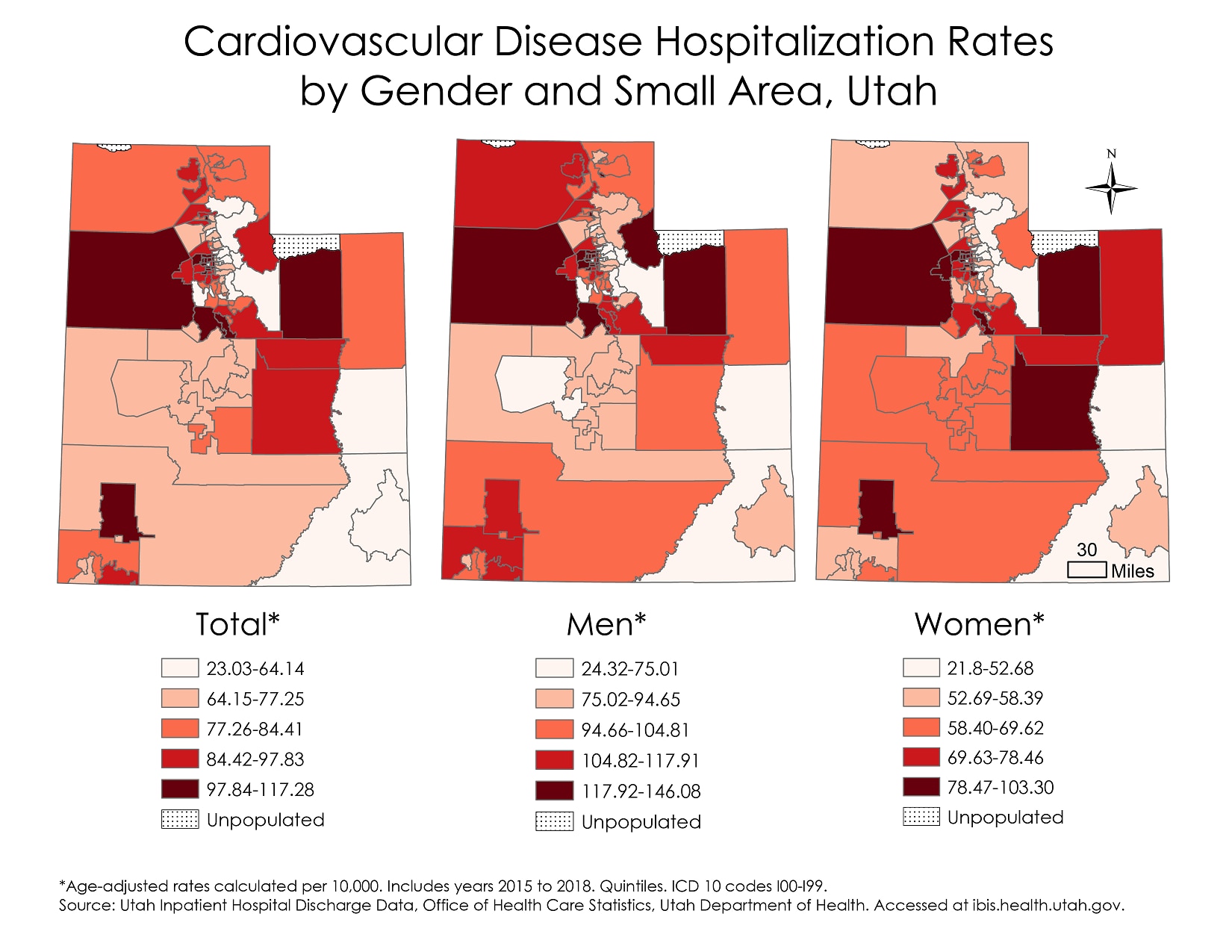Key points
Data sources
Some Utah Small Areas have consistently high cardiovascular disease hospitalization rates regardless of gender. However, there are some key differences in Utah Small Areas with very high rates between men and women that merit further analyses.
ArcGIS Pro 2.5.2
Utah’s Public Health Indicator Information System (IBIS), Utah Inpatient Hospital Discharge Data, Center for Health data and Informatics, Utah Department of Health. Utah Automated Geographic Reference Center (AGRC).
These choropleth maps display the region-level cardiovascular disease hospitalization rates by gender (age-adjusted; 2015 (October to December), 2016, 2017, and 2018 combined) among adults 18 years and older based on the Utah Inpatient Hospital Discharge Data. 2015 data only include October to December as a result of the move from ICD 9 to ICD 10 codes. Regions were defined as the 99 Utah Small Areas. “Utah Small Areas” refers to a set of geographic areas in Utah with population sizes ranging from approximately 15,000 to 60,000 persons. These geographic areas are especially useful for doing public health assessment in communities within Utah’s urban counties. Categories were calculated using quintiles.
This map will be used to inform 1815 and 1817 grant work related to identifying high burden geographic areas needing interventions related to heart disease and stroke prevention.
Brittany Brown, Utah Department of Health. Accessed from the Centers for Disease Control and Prevention’s Chronic Disease GIS Exchange https://www.cdc.gov/dhdsp/maps/gisx/mapgallery/UT-cvd-hosp-gender.html Accessed from the Centers for Disease Control and Prevention's Chronic Disease Map Gallery.

